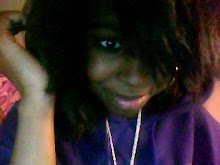Hello!
As part of my music magazine my teacher assigned me with a task to create interview questions for my interview with the feature artist of magazine which will be presented on the Double Page Spread. I believe doing an interview with the artist will be effective for the audience because the audience can form a closer relationship with the artist and can have an incite to what really goes on in the artists lives. Nevertheless I shall display the questions that I will ask my artist *Tiana* below however these are not concrete and may be considered as a rough plan to what might actually happen when the interview commences. Additionally the interview will take place sometime during this week depending on the schedule of the artist but preferably on Tuesday 1st March, 7pm at the artists house as I'm quite sure this would be good location, time and date for her.
- What is it like to be a universal hit and to be called ‘ the new face of R&B’?
- When did you first start singing?
- Who are your musical inspirations and why these artists in particular?
- Do you only listen to R&B artists or does your taste in genre vary?
- Where would be the most entertaining place for you to perform?
- Who would you like to collaborate with in future?
- Do you play any instruments?
- What do you believe the future holds for you?
I chose these questions in particular because they are all about her and I believe the audience would want to know who this artist is, a bit about her what we can expect in future from this artist. Additionally in research some R&B magazines have serious and boring articles that the reader loose interest of and I don't want my article to do that; I want it to show that R&B doesn't have to be serious all the time and that the artists involved do have friendlier sides to them. I've only chosen 8 because the questions are only going to be shown on one side of the double page spread not the full two so i have less information to show and potentially I may pretend that the article would carry on the next page which would make sense.
What did I learn?
Constructing the right questions is hard work because you want the questions to be effective but you also want the reader to retain interest in what is being said by the artist. I just hope that the interview will go to plan and that there aren't any major problems.







